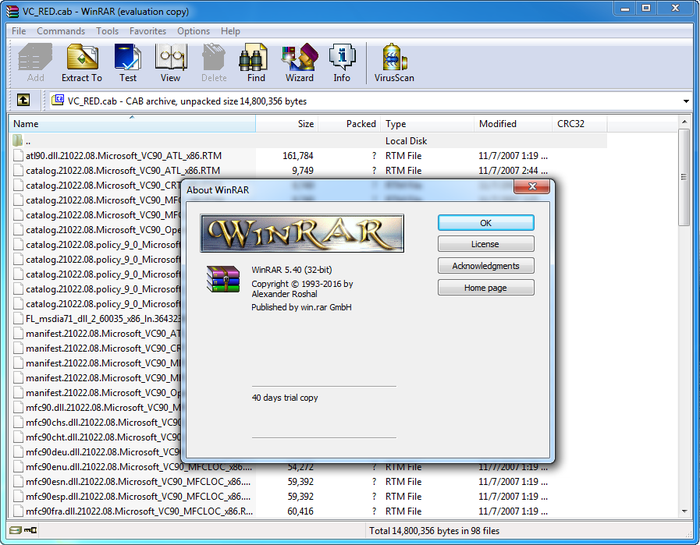

- #Winrar evaluation copy run files archive#
- #Winrar evaluation copy run files trial#
- #Winrar evaluation copy run files Pc#
- #Winrar evaluation copy run files free#
rar extension by default, but that can be overridden by specifying the zip extension in the archive name Folder structures are automatically saved in archives (but not automatically extracted).When specifying all files in a folder, yourfolder or yourfolder\*.When files or listfiles are not specified, all files in the current folder are processed.Excludes the specified file(s) from the operation Deletes files after they are moved to the archive Adds new files and updates older versions of the files already in the archive Equivalent to the “u” command when combined with the “a” command. Multiple can exist in the archive with the same name. Adds files to the archive without including the path information. Extracts and ignores paths Compression example using Multiple Switches: rar a -r -ep -u -df -x*.bat e_archive.rar c:\test\*.*Ĭompresses all new or updated files from c:\test and its subfolders to e_archive.rar, deletes the files after they are added to the archive, and excludes any files with a “bat” extension, Recurses subfolders Examples to uncompress a folder: unrar x c:\yourfile.rar *.gif c:\extractfolder\Įxtracts all *.gif files from yourfile.rar to c:\extractfolder\ (trailing backslash required) and restores the folder structure unrar e c:\yourfile.rarĮxtracts all files in c:\yourfile.rar to the current folder (folder structure ignored) txt files in otherfolder and its subfolders rar a yourfilesĬreates archive yourfiles.rar and compresses all files in the current folder, but doesn’t include subfolders (note lack of extension WinRAR will use the default extension. txt files in the current folder and its subfolders rar a -r C:\yourfolder\yourfiles.rar C:\otherfolder\*.txtĬreates archive yourfiles.rar in C:\yourfolder and compresses all. Rar a -r C:\yourfolder\yourfiles.rar *.txtĬreates archive yourfiles.rar in C:\yourfolder and compresses all. Examples to compress a folder: rar a -r yourfiles.rar *.txtĬreates archive yourfiles.rar and compresses all. For more detailed information, open the rar.txt file in the WinRAR directory which contains the RAR console version user’s manual. To get a listing of the options for the rar and unrar commands, open a command window, cd to the WinRAR directory, and type rar or unrar and then press enter (rar /? or rar help may also be used, use rar >rar_cmds.txt or unrar >unrar_cmds.txt to print the command options to a file). The syntax for using the WinRAR executables is: RAR or UNRAR. Using WinRAR’s command-line tools is similar to those for IZArc and 7-Zip.
#Winrar evaluation copy run files trial#
Although WinRAR is shareware, it can be used on a trial basis for 40 days. Both are located in the “C:\Program Files\WinRAR” folder in the installable version. It includes two command-line tools, rar.exe and unrar.exe, where rar.exe compresses and unrar.exe uncompresses files.

WinRAR is a popular and powerful archive manager that can be used from the command-line or with scripting languages such as batch files.
#Winrar evaluation copy run files Pc#
The information in this guide was tested on a Windows PC running Vista.

#Winrar evaluation copy run files free#
This guide is an extension of a previous post, Automate Zipping Tasks using the Command-line Interface that explained the use of the command-line tools for two free compression utilities, IZArc and 7-Zip. This guide describes the use of the WinRAR command-line tools (v5.01) for compressing and uncompressing files in a directory and their use in batch files (for IZArc and 7-zip, see this post).


 0 kommentar(er)
0 kommentar(er)
